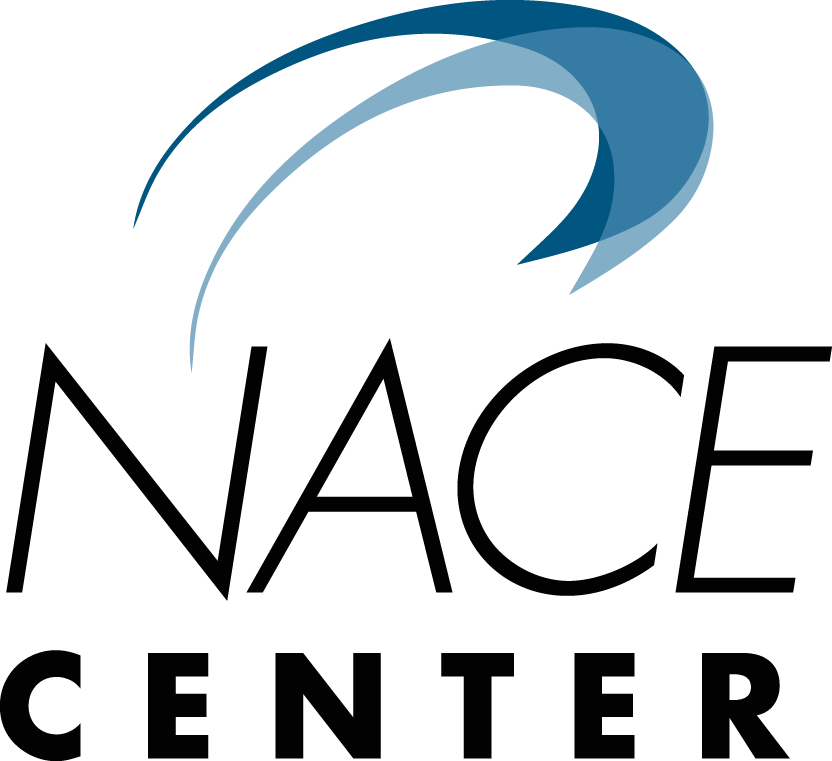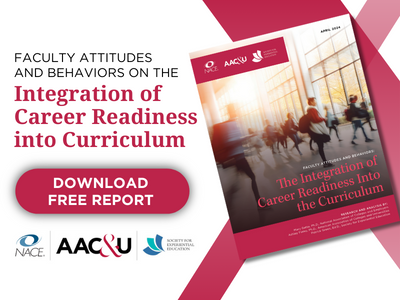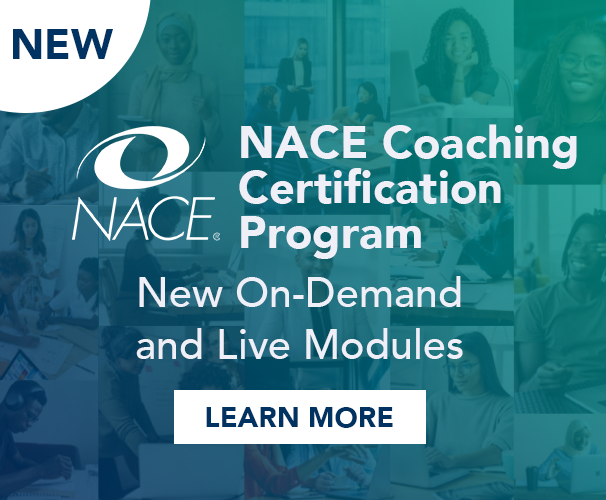NACE Journal, May 2021
Over the past few years, responses to the NACE First-Destination Survey have surfaced an interesting trend specific to the title of university career services leaders, with an increasing reporting of elevation in naming conventions that suggested the need for assessment and analysis. The presenting question was the degree to which these changes mapped to immutable university characteristics (public/private, size, location, student population) or to other variable factors specific to the institutions.
To this end, NACE partnered with Mary Scott, managing consultant at Scott Resource Group, to conduct a qualitative research project that comprised a series of deep-dive interviews with selected university executives and career services leaders focused on the drivers for, implementation of, and outcomes achieved associated with their elevated title, and the positioning of their career services function.
The following 12 markedly different universities, identified by NACE research, agreed to participate in the project: American University; Gonzaga University; Kansas State University; Moravian College; Ohio State University; Purdue Global University; Purdue University; William & Mary; University of Miami; University of Tampa; University of Texas – Austin; and Yale University. The interviews were conducted from February 18 – June 22, 2020, a timeframe extended to accommodate the COVID-19 pandemic and racial injustice developments that significantly impacted staff availability to participate.
This articles synthesizes the 12 distinctive narratives provided by the participating universities. The topic is organized around the following four areas of exploration: 1) career services repositioning background; 2) repositioning implementation; 3) impact measures; and 4) current state.
Results are aggregated to surface patterns, and, as such, are not attributed to specific universities or individuals. The article concludes with implications—which, given events of the past several months, have increased in significance as institutions address internal and external forces impacting universities in real-time and going forward.
Career Services Repositioning Background
With the exception of one university, all surveyed career services organizations reported that their function, prior to the repositioning, had been in place “for a long time/forever,” with actual timeframes estimated at between 15 and 20 years, on average. In several cases, the previous career services leader had also been in the role for a substantial length of time—at a few, as measured in decades.
The primary driver for repositioning the career services function, although unique to each institution, tended to follow one of two story lines: key leadership changes at the university, or a purposeful response to changing external forces, such as the rising cost of education, with a combination of these factors described at a few schools.
The overarching concern for student success, particularly among the first-generation population, were cited as a specific driver—as well as the need to better align with employers’ needs. In addition, the poor historical reputation of career services was also a consideration at a couple of participating universities.
Where university leadership changes, e.g., the appointment of a new president or provost, led to the repositioning and/or reorganization of the career services function, the opportunity itself created the impetus to make changes, especially at those institutions where the “new blood” championed student success. At other schools, the departure of the previous career services incumbent precipitated a wholesale rethinking of the function, with a common theme of transitioning from a transactional delivery model to one with a significantly more strategic role within the overall university structure.
Specific drivers contributing to each university’s repositioning efforts were as varied as the institutions themselves, and included such factors as significant enrollment growth; the need to better connect with academic areas; a commitment to the local community; turf wars/siloed organizations and/or the threat/emergence of additional career centers; a campuswide embrace of competency-based modeling; and a “less than desirable” physical space/location that compromised center usage or service delivery.
Elevation of the title of career services leader
The original impetus for this research project was an examination of the relatively recent pattern of elevated titles for the career services leader, as captured in the NACE First-Destination Survey data reporting. In practice, of the 11 universities where such a title change had occurred, the earliest elevation occurred in 2011 and spanned a seven-year time horizon; more than half of the title elevations occurred in 2014-15.
Prior to the elevation, seven of the leaders (or their predecessors) held the title of Director; the remaining five were Executive Directors. The new titling conventions included four Executive Directors, four Associate Deans, three Assistant/Associate Vice Presidents, and one Senior Director. Several career services leaders mentioned internal title elevation consistency issues related to other functional areas within their university, although most referenced having done some external benchmarking to assess current trends within the profession to bolster their argument.
Three universities cited an organizational reporting relationship shift from student services to the academic side of the house (as was the current case with most others) as part of their repositioning; one school removed a reporting layer when its office was reorganized to gain closer access to senior leadership. A common theme throughout the career services leader interviews was the increased importance and value of student success mapped to the overall university mission and strategy. At almost all institutions, the repositioning of career services was intentional, and aligned with its value proposition.
At those universities where new institutional leadership was the motivating force in the repositioning of career services, the chief driver of the organizational change was the C-suite executive who was championing the cause. At three other universities, the career services leader partnered with an executive to design the strategic shift; at two others, it was the center leader who led the repositioning charge. In most cases, an overall strategic plan (institutional or departmental) provided the framework and addressed whatever gaps had been identified for that university in aligning with its mission and meeting its goals.
Repositioning Implementation
Once the decision was made to reposition the career services function, the planning and implementation phases were executed with a sense of urgency at most universities. At eight of the participating universities, the career services leader was given responsibility for designing and implementing the repositioning effort within the framework (and organizational realignment) set forth by the university executive.
In almost every case, it was the “role” of the career services leader that changed most significantly in the new organization. The elevated title was certainly a signal within the institution, and was perceived as facilitating the enhanced role of the function, but it was the repositioning itself that most career services leaders described as how they had been “given a voice” and “a seat at the table.”
Specific examples of tangible results from the shift from a transactional to a strategic focus included being invited to Board of Trustees meetings; participating with deans on strategic projects, e.g., COVID-19 task forces that were contemporaneously taking shape on several campuses; and bringing various constituencies together to address issues and solve problems.
Several career services leaders described being much more integrated into the department/faculty orb internally—and others cited taking on an enhanced community role—with the common refrain that such involvement “would never have happened” before the elevation of the function.
Essential to the valuing of the career services leader’s representation in matters of university significance was the professional breadth and depth of the individual selected to head the repositioned organization. Institutional executives interviewed for this project cited the professional credentials and credibility of the individual heading their career services organization, with NACE leadership experience mentioned repeatedly on an unaided basis as a powerful differentiator. Of note: The selection of the individual to head the repositioned career services function included new hires following national searches, elevation of incumbents, as well as internal promotions. Those involved in the selection process varied by institution and included university presidents, provosts, the Alumni Office, as well as student affairs, which, in one instance, partnered with the business school “to get it right.”
Involvement with campus partners
In a broader sense, the involvement of campus partners was critical not only to the successful implementation of participating universities’ career services repositioning, but also to ongoing campus collaborative efforts, as described below.
Faculty: Given the stated objective of strengthening student success and career outcomes at several universities, the partnering with faculty and building a community of allies was mentioned repeatedly as a key repositioning strategy. The assignment of department liaisons, work groups, and a focus on student employability all contributed to developing deep partnerships—although the starting point for such collaboration ranged from “pre-existing respect” to “a slow conversion of previously hostile faculty.” One leader described the rebranding of the career center office itself as “huge” in developing the relationships with faculty.
Administrative Offices: Not surprisingly, involvement (and relationships) with university administrative offices ran the gamut, from descriptions of intentional engagement, especially with academic advising, admissions, alumni, and student life, to challenges related to “tensions” with development. Successful partnerships were predicated on convincing administrative offices that career services could help them with their work.
Student Affairs: Two universities built an alliance with their diversity, equity, and inclusion organizations as a key component of their strategic plan, a development likely to gain traction as institutions address racial injustice. Other important career services partners included student organizations, affinity groups, and residence halls/Greeks.
Staffing and Facilities: With two exceptions, most participating organizations did not increase staffing when the career services function was repositioned; two others reported a net headcount reduction. The most common approach to aligning with the new organization model was to reassign existing staff.
In addition, although building or moving to a new career services facility was part of the plan at fully eight of the universities, the scope, timing, and specifics of the new (or repurposed or renovated) facility again varied significantly. What was of special interest is that the enhanced facility timing was less likely than not to be commensurate with the leader’s title elevation.
Communications Process: The final set of interview questions specific to the career services function repositioning implementation focused on the communications process. Consistent with responses reported thus far, the range of approaches, both internally and externally, were more different than alike, in this case tied to the uniqueness of each university and its overarching communications protocols and channels.
Internal Communications: Whereas two universities described their internal communications process to announce the career services function repositioning as “piecemeal,” one other leader referred to their approach as “over the top.” The others fell along a continuum between these two end-points, with such events as new facility open house/building tours for university partners, Town Hall meetings with university executives, and “great story-telling” using internal communication channels—including a dedicated student “beat reporter” from the campus newspaper.
External Communications: A variety of university organizations were leveraged by institutions in announcing the repositioning of the career services function, including the alumni council and parents’ council, along with local workforce development and community groups. One key focus mentioned by several career services leaders was emphasis on enhanced services for employers, particularly at those schools where facilities had previously been “less than ideal.”
Impact Measures
Consistent across each university was a commitment to, and broad usage of, data in support of measuring progress against strategic objectives. The NACE First-Destination Survey was mentioned by five of the career services leaders as a primary analysis tool.
Two universities use NPS (Net Promoter Score) metrics to gauge student satisfaction. Yet others track and report discrete campus events on a year-over-year comparative basis.
One career services leader described using compelling data to score a major victory by tracking the number of students who declined unpaid internship offers—and was able to lobby successfully for funding!
In terms of impact specific to four measures—career services’ effectiveness, student engagement, career outcomes, and campus culture—participating career services leaders listed the following granular data metrics as representative elements of their function’s ongoing performance assessment:
Career Services’ Effectiveness: Among those data points tracked to measure the effectiveness of career service outcomes are the percentage of students who have contact with employers; employers’ access to students; individual career outcomes for each program of study; equipping students to tell their stories; and such emerging student needs as COVID-19 service delivery.
Student Engagement: Most frequently mentioned student engagement metrics tracking included logins to the career center site; use of Handshake; percentage of multicultural and first-generation students as compared with national averages; touchpoints, such as virtual career fairs and digital interviews; and event attendance tracking.
Career Outcomes: Although four of the participating universities responded that they do not yet have sufficient data to measure career outcomes, others indicated that extensive tracking allows them to not only do so, but to also zero in on racially diverse, first-generation, and LBGTQ populations.
Campus Culture: The most consistent response to the question on measuring campus culture impact focused on the clarity provided by having a strategic plan and taking the long view toward achieving objectives. One university provided the specific example of the infusion of professional competencies into the curriculum and student life at their institution. Another cited a first-year seminar course on careers, which represented a culture shift. In addition, a general sense for a genuine “appreciation for what we do”—and the university’s holistic approach to careers—was cited as a direct result of “having a seat at the table.”
Current State
Despite the significant differences in participating universities’ career services repositioning journeys, there was strong consensus that the university’s objectives had been accomplished—or were well on their way—at the majority of institutions. Five career services leaders stated that expectations had been met, four more indicated that theirs had been exceeded, while two of the remaining schools responded that it was too soon to know. As an additional point, only one career services leader considers their repositioning to be completed, with the remainder using terms such as “still evolving,” “completed but not perfect,” “still making tweaks,” and “it will never be completely done” to describe their current state.
Among the positive results attributed to the career services repositioning were:
- A university focus on career strategy and outcomes;
- Developing partnerships and groups of allies within the campus community focused on student success; and
- A greater level of student engagement with (and valuing of) their career services office—in sum, that their reputation had been transformed, and for the good.
On a more granular level, specific examples of positive outcomes included:
- Recognition by the C-suite as the expert on careers;
- The satisfaction of doing work that matters;
- Having staff to help every student;
- Expanding services to the local community;
- Infusing the university with professional competency systems and metrics; and
- Having physical space that has boosted morale among staff and students.
The overarching theme in career services leaders’ perspectives was that, despite the challenges, the repositioning effort was a critical component in aligning the function with university goals—and in achieving connectivity with the institution as a whole.
By way of challenges, most difficulties mapped to relationships: those within the university at large, such as turf issues, resentment over titling, and the challenge in convincing others to build partnerships; those perpetuated by bureaucracy, e.g., lack of detailed job descriptions; and those internal to the career services function, e.g. working with existing staff to adjust to philosophical and organizational change. One leader mentioned another downside to the repositioning: loss of contact with students resulting from the function and title elevation. It appears that there were additional forces at play that affected the career services facility.
Overall, participating career services leaders agreed that commitments made during the repositioning framing specific to facilities and staffing had been met, although there were a few one-offs about individual requests, e.g., staff augmentation for specialized populations, and a repeated concern about the need to be careful with such appeals for additional staffing.
When asked what might have been done differently, a number of career services leaders observed that, in hindsight, acting earlier would have been a better approach. Whereas this was expressed mostly as a general sentiment, one leader specifically mentioned standing up the employer relations function sooner, and another would have added a marketing person earlier—albeit with the benefit of knowing what they know now.
Implications
One of the most significant takeaways from this qualitative research project relates to the impetus for the repositioning of the career services function at a divergent group of universities over the past several years.
As documented here, the organizational redesign was often precipitated by a significant change at the executive level of the university. In an era of increasing questioning of the value of a university education, new leadership can drive an emphasis on student success as a powerful “return on investment” metric.
Absent a new president or provost, other universities have recognized the need to reconfigure their career services function within the context of the overall institution or reorganize it to address changing student (and parent) needs and expectations about careers. With as distinct the circumstances and details of each participating university, this much is constant: The elevation of the career services function to the level of “having a seat at the table” was the defining endgame; it is the means by which influence is achieved and effectiveness is measured.
As detailed in the introduction, the NACE Career Services Repositioning research project was launched in February 2020. As such, the focus and data gathering were impacted by the COVID-19 pandemic; several career services leaders referenced their involvement in designing and executing institutional responses and protocols as recently added assignments.
The amended interview scheduling also overlapped with the early stages of the racial injustice issues that emerged in early summer. There is no question that both developments have had—and will continue to have—significant impact on universities at large, and provide challenges and opportunities for career services organizations on both a strategic and tactical level, as well. The impact of these events on careers is palpable and profound.
For those career services organizations that have yet to “have a voice” at their universities in shaping the direction of how their institutions address these current, mission-critical challenges—and who knows what is to come?—consider this advice from a university executive who described their success as the result of having followed this roadmap:
1) Reposition career services with intent and strategy;
2) Choose the right leader; and
3) Be open to where it makes sense at your university: Where will the light shine the brightest? There is no be-all and end-all. Don’t follow others.
The 12 unique stories that comprise the findings of this study illustrate the wisdom of that straightforward formula—and the “urgency of now” has rarely been so clear and compelling.






